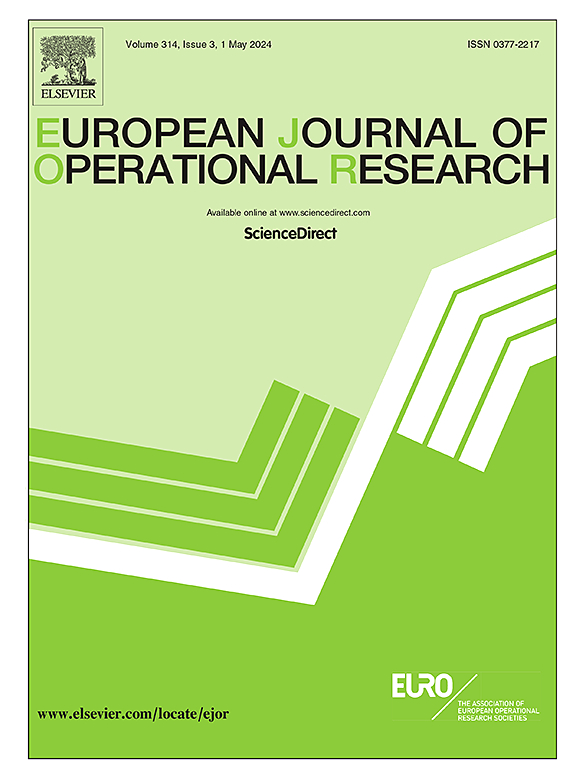考虑随机约束的概率分支与约束
IF 6
2区 管理学
Q1 OPERATIONS RESEARCH & MANAGEMENT SCIENCE
引用次数: 0
摘要
在本文中,我们研究了一个模拟优化问题,该问题具有以下挑战:(i) 无法分析评估目标函数和多个约束函数;相反,我们依赖随机模拟来估计它们;(ii) 离散且潜在的巨大解决方案空间。我们的目标不是提供单一的最优解,而是在特定的量级(如前 10%)内找出一组接近最优的解。我们的研究涵盖两种不同的问题设置或框架。第一个框架只关注随机目标函数,不考虑任何随机约束条件。在这种情况下,我们建议采用概率分支和边界算法来发现水平解集。另外,第二个框架涉及随机约束。为解决此类随机约束问题,我们将惩罚函数方法与概率分支边界算法结合使用。此外,我们还对这两种算法进行了收敛分析,以证明它们的渐近有效性,并突出它们的理论特性和行为。我们的实验结果证明了我们提出的算法的效率,表明它们优于模拟优化领域的现有方法。本文章由计算机程序翻译,如有差异,请以英文原文为准。
Probabilistic branch and bound considering stochastic constraints
In this paper, we investigate a simulation optimization problem that poses challenges due to (i) the inability to evaluate the objective and multiple constraint functions analytically; instead, we rely on stochastic simulation to estimate them, and (ii) a discrete and potentially vast solution space. Rather than providing a single optimal solution, our aim is to identify a set of near-optimal solutions within a specific quantile, such as the top 10%. Our investigation covers two different problem settings or frameworks. The first framework is focused solely on a stochastic objective function, disregarding any stochastic constraints. In this context, we propose employing a probabilistic branch-and-bound algorithm to discover a level set of solutions. Alternatively, the second framework involves stochastic constraints. To address such stochastically constrained problems, we utilize a penalty function methodology in conjunction with a probabilistic branch-and-bound algorithm. Furthermore, we establish a convergence analysis of both algorithms to demonstrate their asymptotic validity and highlight their theoretical properties and behavior. Our experimental results provide evidence of the efficiency of our proposed algorithms, showing that they outperform existing approaches in the field of simulation optimization.
求助全文
通过发布文献求助,成功后即可免费获取论文全文。
去求助
来源期刊

European Journal of Operational Research
管理科学-运筹学与管理科学
CiteScore
11.90
自引率
9.40%
发文量
786
审稿时长
8.2 months
期刊介绍:
The European Journal of Operational Research (EJOR) publishes high quality, original papers that contribute to the methodology of operational research (OR) and to the practice of decision making.
 求助内容:
求助内容: 应助结果提醒方式:
应助结果提醒方式:


